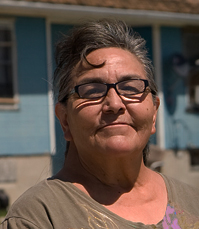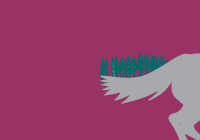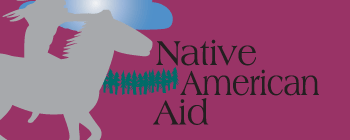Merle Locke, Oglala Lakota Artist, resides on the Pine Ridge Indian Reservation. As an emerging Lakota artist, he hopes to express and reflect his history and culture with better understanding and knowledge for mankind to share in this world. His artwork is a part of him keeping the Lakota tradition and culture alive.
He says, “Lakota art is in constant motion, very dramatic and always moving. It is very creative, but creativity doesn’t come instantly. Creating creativity is an art that is in itself hard work and that is what Lakota art is about. I classify my artwork as primitive style art not influenced from the non-Indian world. Depicting historical events must be expressed properly and accordingly and that in itself requires a great deal of oral and written research.
Lakota art is very sensitive from my perspective. It can be discouraging and encouraging. Many written history documents have been misinterpreted, and I see the same with Lakota art. I feel it is my obligation to properly depict the past and present properly so our future Lakota artists can be encouraged and inspired.”
Recently, Merle agreed to a brief interview about a few of his ledger art pieces with us.
Transcript of Merle Locke’s interview
[Merle Locke] This was “Nation Becomes Great,” with a woman with seven dragonflies.
I put a medicine wheel indicating the four colors, mankind, earth, and sky. She has a real pretty buckskin dress with dark pink. She’s holding a pipe bag.
Lakotas would call it ‘Women are the Backbone of the Nation.’ Nations become great with strong women, so that’s what it represents.
[Interviewer] What do the dragonflies represent?
[Merle Locke] They represent hope and prosperity.
[Merle Locke] I have four of them on here. This is kind of a unique piece. When I was drawing it out, there was a line that came across. I just left it to make it dark. I just shadowed it a little bit so you can see the line. This is “Rides with Great Honors.”
There is a war shirt an honor shirt he has. He has five horse tracks on him. He is successful in battle and the dragonflies bring him hope and prosperity. He’s a buffalo dreamer and the green is hope.
[Interviewer] Can you tell me how hard it is to get these ledgers?
[Merle Locke] It is really getting hard now. I’ve been doing music sheets and a lot of other artists are drawing ledger art, so it’s hard to get hold of them.
[Interviewer] Can you tell me the history of ledger art?
[Merle Locke] Ledger art came back in the 1870s with the Oglala Sioux. It started out in Fort Robinson in 1877. Europeans gave the Lakota drawing paper and colored pencils to do art work to pass time because they lost the livelihood of hunting buffalo. A lot of scenes were of Little Big Horn. After that, a lot of the scenes were of dreams and visions onto the ledger paper.
So, I get the ledger paper from back in that time and use contemporary scenes that reflect back in our history. That’s the ledger art I use here.
Additional Resources:
https://plainsledgerart.org/history/
http://nativeamericanhistory.about.com/od/artmusicdance/a/Ledger-Art-And-The-History-Of-Native-American-Internment.htm
http://en.wikipedia.org/wiki/Fort_Robinson_massacre
http://americanhistory.si.edu/documentsgallery/exhibitions/ledger_drawing_2.html
http://en.wikipedia.org/wiki/Ledger_art
http://www.mpm.edu/research-collections/anthropology/online-collections-research/ledger-art-collection
http://www.spiritsinthewindgallery.com/proof-of-ownership-watercolor-painting-merle-locke/
| 














